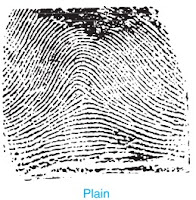DNA Extraction: Steps and Methods Involved
What is DNA Extraction?
DNA Extraction is a process of taking out DNA from a cell by breaking the cell membrane and Nuclear membrane with the help of chemical, enzyme, and physical disruptions. The first DNA isolation was done in 1869 by Friedrich Miescher.
Common sources of DNA isolation are whole blood, hair, semen, saliva, buccal (cheek) swabs, urine, and other important biological fluids. DNA isolation helps a forensic expert to link a suspect from a crime scene.
Steps involved in DNA isolation
1. Cell and tissue disruption
Cell and tissue disruption is done using an enzyme known as Proteinase K. Tissues can also be disrupted using boiling and alkali agents. Bones and teeth are frozen in liquid nitrogen and then ground to a fine powder.
2. Lysis of membranes and other organelles
Detergents like Sodium dodecyl sulfate (SDS) and Sarkosyl are used for the lysis of membranes in which DNA is released from nuclei and mitochondria.
A buffer like Tris-HCl is used to maintain the pH for avoiding the actions of degrading enzymes.
Reducing agents like DTT are also used to prevent the oxidation process that can damage DNA.
3. Removal of Proteins and Cytoplasmic contaminants
Some constituents of cytoplasm can get dissociated from DNA due to the action of detergent and high salt concentration in lysis buffer. This can interfere with DNA isolation.
So, these dissolved proteins are then removed by one or more rounds of extraction with phenol or phenol-chloroform mixture followed by centrifugation.
4. Contamination
Target DNA isolated from the exhibits can get contaminated with exogenous DNA while handling and processing the samples.
To avoid contamination, the evidence samples are extracted and processed in different areas.
5. Storage of DNA Solutions
Extracted DNA is stored in TE Buffer at 4 ℃ or -20 ℃ for short and -80 ℃ for long periods. Frequent freezing and throwing are avoided to save the DNA strands from breaking.
Methods for DNA Extraction
1. Phenol-Chroloform DNA Extraction
This denatures the protein, then centrifugation of the extract is done in which the pellicle (protein ppt) is removed from the junction of the aqueous phase and phenol-chloroform phase.
This process is repeated 2-3 times until there is no visible pellicle and finally, DNA is filtered out.
2. Chelex 100 Resin DNA Extraction
First of all in the washing step, contaminations and PCR inhibitors like Heme are removed from the blood.
Then the boiling is done by suspending the cells in Chelex-100 (chelating resin). This is done because Alkalinity and heating temperature breaks the cell membrane which denatures the cell proteins and releases the DNA.
Finally, the suspension is centrifuged to separate the resin and cellular debris from the supernatant containing DNA.
3. Salting out method for DNA Extraction
This method is developed by Miller et al in 1988 and it is a rapid, safe, and cheap method for extraction.
This method involves salting out cellular proteins by dehydrating and precipitation with a saturated NaCl solution.
First of all, the Buffy coat of nucleated cell is taken in an anti-coagulant (EDTA) then it is suspended in nuclei lysis buffer and the cell lysate is digested overnight at 37 ℃ with SDS and proteinase K solution.
Then, a Saturated solution of NaCl is added to digest the ppt of protein and then centrifugation is done.
Finally, the DNA is precipitated b adding absolute alcohol to the supernatant containing the DNA.
4. Silica Based DNA Extraction
This method is developed by MC Cormick in 1989 and it is commercially used.
First of all, the sample is incubated with cell lysis buffer which breaks the cell membrane and the nuclear envelope. The proteinase K digest all the protein.
Then, All other impurities are removed by centrifugation. Here, the DNA remains bound with silica, and other impurities are discarded.
Finally, the DNA is dissolved into TE Buffer.
5. FTA Paper DNA Extraction
Then, a small part of the card, a generally 2 mm diameter circle is placed into a 1.5 ml tube and impurities are washed off, leaving only DNA on the card.
Then, a small circle of FTA paper is then added directly to PCR.
FTA paper extractions are very simple to perform and do not require multiple tube changes, thus reducing the possibility of sample mixing.
6. Magnetic Bead DNA Extraction
First of all, the sample must be lysed using SDS or other reagents then several rounds of washing in the presence of a magnetic field separate the DNA captured on magnetic beads from other impurities.
Finally, a low salt buffer elutes the DNA from the beads.







